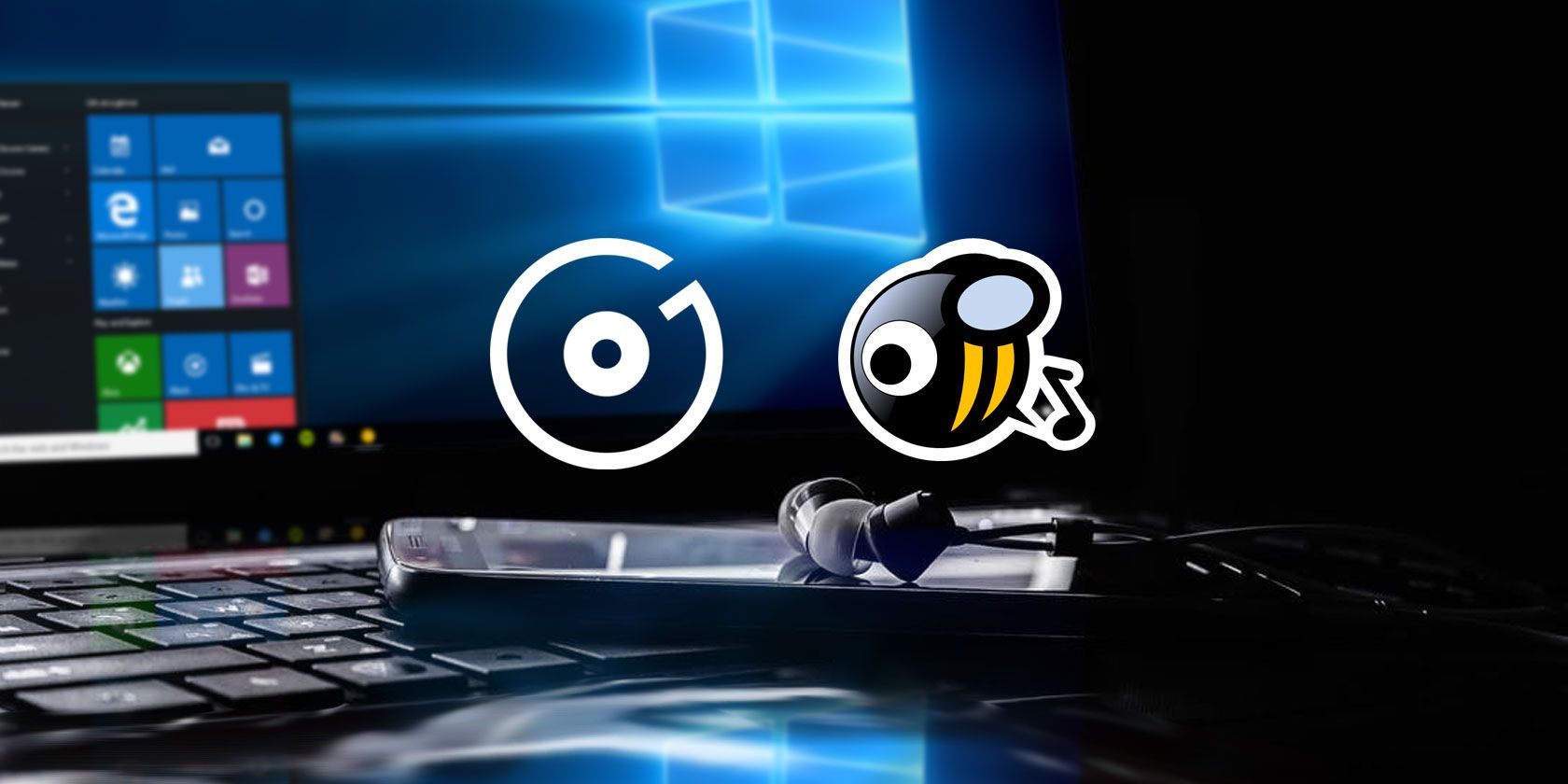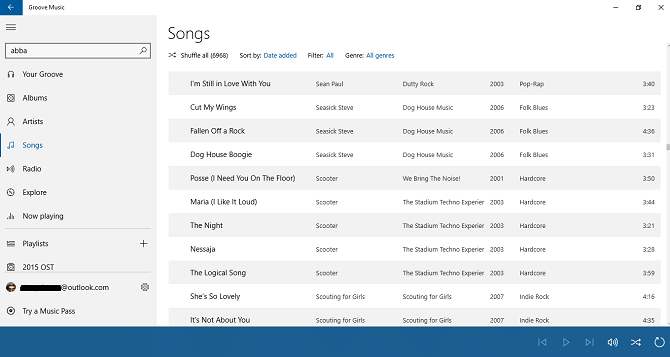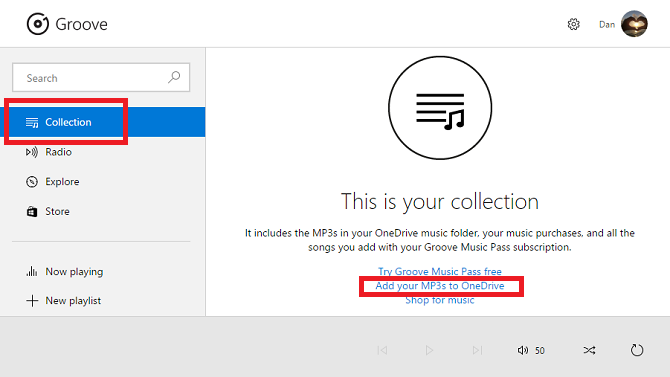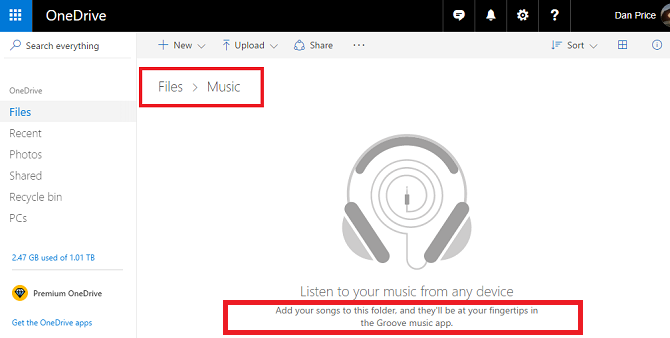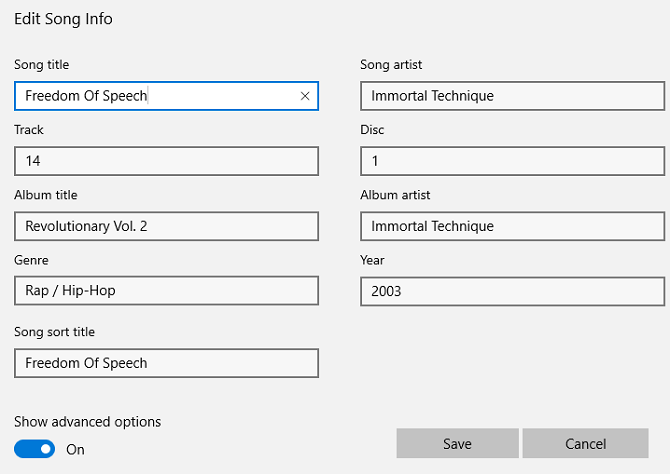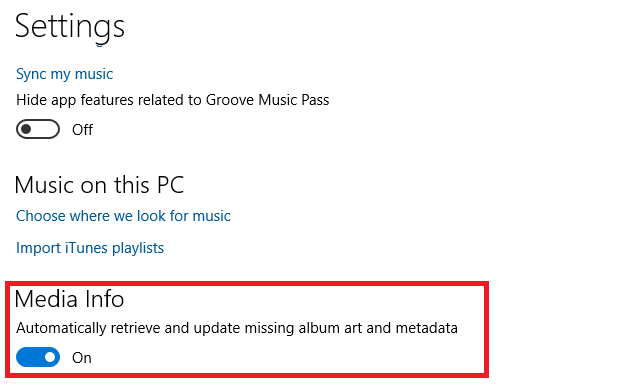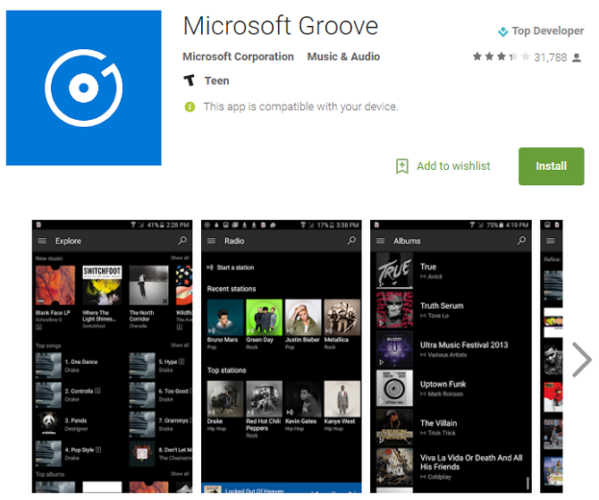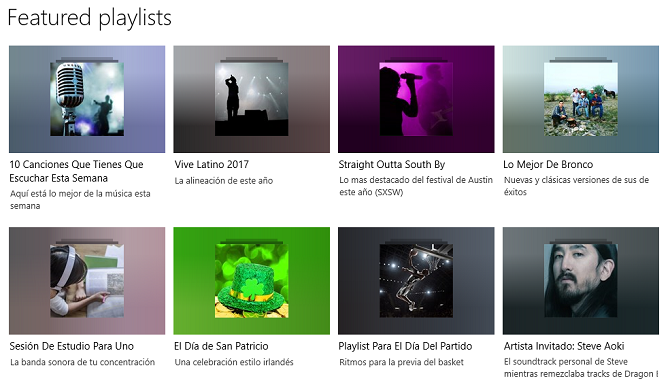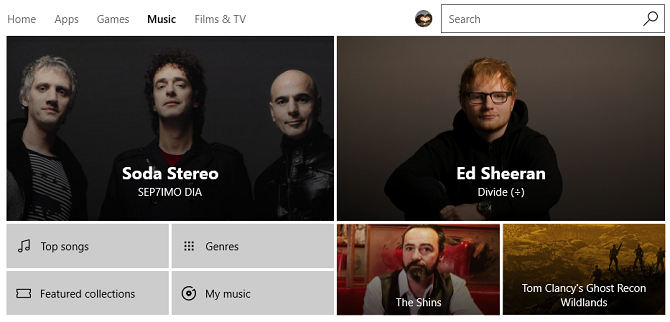Groove Music is the default music app on Windows 10. It's the latest in a long line of Microsoft's attempts to break into the music streaming market, with a library of more than 38 million songs for Groove Music Pass subscribers. More importantly, Groove Music has some great tools for managing and listening to your locally-saved music libraries.
The feature list has grown substantially since Microsoft rebranded Xbox Music as Groove Music back in 2015. Today, it's not as bad as you might think.
In this article, I'm going to introduce you to some of Groove's most exciting features and compare the app with the much-vaunted MusicBee as I go.
1. Simplicity
Lots of users criticize Groove Music for its simplicity. At first glance, it's easy to see why. The app looks dull; in the left-hand column, you'll see your music library and your playlists. In the main panel, you'll find track and album details.
People who use MusicBee, or one of the other best music players for Windows, will decry the lack of options. It's fair enough, but for lots of listeners, simplicity is a desirable attribute.
Many people find themselves overawed by MusicBee's endless tagging options, third-party themes, customizable displays, community plugins, and so on. They just want to be able to find their songs and listen to them. If you're one of those people, there is no need for you to download a third-party app. Groove will fulfill all your requirements.
2. Web Player
One of the biggest drawbacks of MusicBee and other desktop music players is their inability to stream your cloud-based music. Conversely, Google Play Music lets you upload 50,000 of your own songs so you can listen when you're away from home, but it doesn't have a desktop player.
Groove Music offers the best of both worlds, giving you a seamless integration between the two formats. You can upload as many songs as you want to your OneDrive account (until you hit your storage limit), and once you've uploaded them, you can open the Groove Music Web Player on any device and your songs will be available.
To upload songs, open the web app and go to Collection > Add Your MP3s to OneDrive.
The app will create a new Music folder in your cloud account. Upload your music into the new folder.
The design of the web app and the desktop app are almost identical, meaning there's no jarring experience if you frequently switch between the two. It's a design principle Spotify users will appreciate after the company's disastrous update to its web player in early 2017.
3. Automatic Metadata
As I mentioned earlier, Groove Music does not have a tool that lets you add album artwork to your tracks.
It does have a way to change basic metadata (right-click on song > Edit Info), but it'll only let you change the song title, artist name, album title, track number, disc number, genre, and year.
Compare that with MusicBee, which has six tabs packed with metadata options, including lyrics, custom tags, album artwork, and artist images.
However, just because Groove Music doesn't let you add your own artwork, don't worry. The app can automatically find and download artwork and missing metadata tags. It will even embed the downloaded imagery into the music file. It'll be available on other players if you migrate to an alternative app in the future.
If your collection is extremely niche, you might find Groove makes errors and downloads incorrect data. To turn off the automatic metadata, head to Settings > Media Info > Automatically Retrieve and Update Missing Album Art And Metadata.
4. Cross Platform Compatibility
MusicBee has a portable music player you can keep on a USB drive, but there is no officially-supported version for Android or iOS.
Groove Music has an app for both platforms. Like with the web player, any songs you've uploaded to OneDrive will be available. If you're a Groove Music Pass subscriber, you'll also be able to access the service's library of songs.
Critics attacked the two apps when they first became available, but over the last year Microsoft has added more features and they've become significantly more stable.
Now the pairs of apps not only give Groove an advantage over MusicBee and other desktop apps, but they are also starting to become a viable alternative for more established streaming services such as Spotify.
5. Music Discovery
It's true that Groove's music discovery tools cannot yet compete with Spotify's Discover Weekly and Release Radar, but it does have some discovery tools -- unlike MusicBee.
You can split the tools into two sections, the discovery within the app and discovery on the Windows Store.
Within the app, you'll find recommended playlists from "Groove Editors". The more music you listen to, the more these will be refined. Groove can use data from both your personal music collection and your Groove Pass subscription to curate the lists.
If you want to buy content outright, you need to go to the Window Store. It'll offer you recommendation based on your listening history. At certain times of the year, you'll also find themed music. Any content you buy will automatically become available in the Groove Music app.
Groove Music or MusicBee?
I love MusicBee. I've used it for a long time. This article is not supposed to criticize the app nor is it written to try and convince you to abandon the app altogether.
My opinion? You should use the two apps in tandem. Rely on MusicBee as your day-to-day desktop music player, but let Groove continually monitor your library so it stays updated. That way, you can enjoy Groove's best features when you need them.
Have I convinced you to give Groove Music a chance? What do you like and dislike about Microsoft's native music app? You can leave your thoughts and opinions in the comments below.

